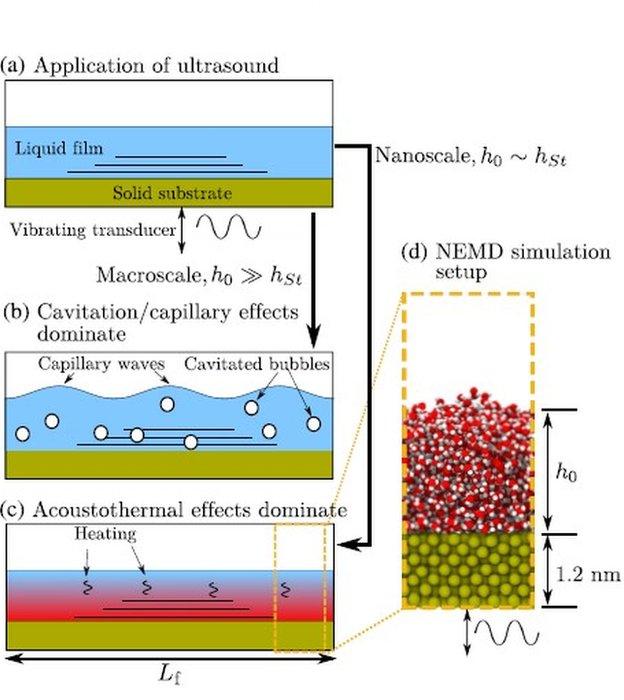Tiny vibrations could transform heating devices, scientists find
- Published

A diagram of how the vibrations work
Ultra-fast vibrations can be used to heat tiny amounts of liquid, Edinburgh scientists have found.
The researchers say the discovery could have a range of engineering applications.
The findings could, in theory, help improve systems that prevent the build-up of ice on aeroplanes and wind turbines.
They could also be used for cooling systems in smartphones and to develop more energy efficient clothes dryers.
Scientists from Edinburgh University have shown for the first time that tiny quantities of liquid can be brought to a boil if they are shaken at extreme speeds.
The team made the discovery using computer simulations.
They found that liquid layers one thousand times thinner than a human hair can be boiled using extremely rapid vibrations - a million times faster than the flapping of a hummingbird's wings.
They said the motion of the vibrating surface under the fluid is converted into heat as liquid molecules move and collide with each other.
It is only possible to use vibrations to boil extremely small quantities of liquid.
Energy from vibrations applied to larger volumes instead produces tiny waves and bubbles, and only a very small amount of heat.
The team used the Archer UK National supercomputing service to run its simulations.
The study, published in the journal Physical Review Letters, external, was supported by the Engineering and Physical Sciences Research Council.
Dr Rohit Pillai, of Edinburgh University's school of engineering, who led the study, said: "Exploiting this new science of vibrations at the smallest scales could literally shake things up in our everyday lives.
"The advent of nanotechnology means that this discovery can underpin novel engineering devices of the future."